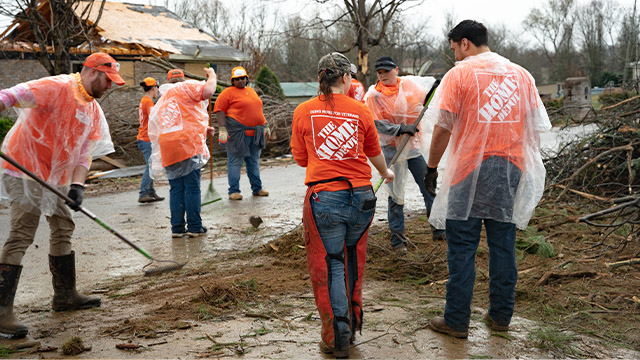It all started with a firing—a very foolish one.
In 1978, Bernie Marcus and Arthur Blank were executives at Handy Dan, a home improvement chain based in Southern California. Despite the business being very profitable, the pair had begun to tinker with a new idea. By lowering prices, they found, the stores’ volume shot up, making Handy Dan even more money. The executives had planned to implement that strategy systemwide, but they never got the chance. Corporate raider Sanford C. Sigoloff—who liked to call himself the “Skillful Scalpel”—took over the company, and deciding to save himself two salaries, got rid of Marcus and Blank.
That one decision probably prevented Handy Dan from becoming America’s home improvement leader. Instead, that honor would go to a place called The Home Depot.
Recruiting investment banker Ken Langone and retailer Pat Farrah, who’d run National Lumber and Supply Company, Marcus and Blank opened up a one-stop warehouse destination with everything a homeowner could want, staffed by knowledgeable salespeople and all selling at discount prices.
“We believed from the start that if we brought the customer quality merchandise at the right price and offered excellent service, we could change retailing in the United States,” Marcus said in a 2008 interview with Entrepreneur.
As we know, they did just that. The first Home Depot opened in Atlanta in the summer of 1979. By years end, there were three more. Home Depot officially became the largest home improvement retailer in America by 1990, and today it has nearly 2,300 stores.
In recent months, Home Depot has been America’s go-to home center in ways it never imagined. After the pandemic sealed much of the citizenry behind closed doors, Americans made home improvement into a new national pastime. For Q2 2020, the chain’s net sales soared more than 23% to just over $38 billion.
During the quarter, “our DIY customers were reengaging with their home and with The Home Depot,” said evp of merchandising Ted Decker. “While we saw strong demand with exterior projects like building decks, sheds, fences and gardens, we also saw strong growth with interior projects like hard surface flooring, interior lighting and painting, to name a few.”
After focusing on building stores for years, The Home Depot has since shifted its efforts to fortifying its distribution capabilities as part of a $1.2 billion strategy to expand same-day and next-day delivery to customers. Meanwhile, the company’s One Home Depot initiative seeks to create an “interconnected shopping experience” that laces digital and physical commerce together.
It’s all a far cry from the single location that opened its doors in Atlanta 42 years ago. And yet, at its core, the brand hasn’t changed so much.
“The Home Depot concept is to provide the most complete assortment of lumber, building materials and home improvement products, competitively priced in a service-oriented retail situation,” Marcus has said. And online or off, pandemic or not, it still does just that.

It’s nothing new for American companies to mobilize to help after a disaster.
Tide’s Loads of Hope initiative brings laundry services to affected areas. Manufacturer Kohler sends its Relief Trailer with mobile showers. But as a purveyor of essential goods, The Home Depot’s disaster role is, for many communities, pivotal.
https://www.adweek.com/brand-marketing/home-depot-home-improvement-national-pastime-quarantine/

